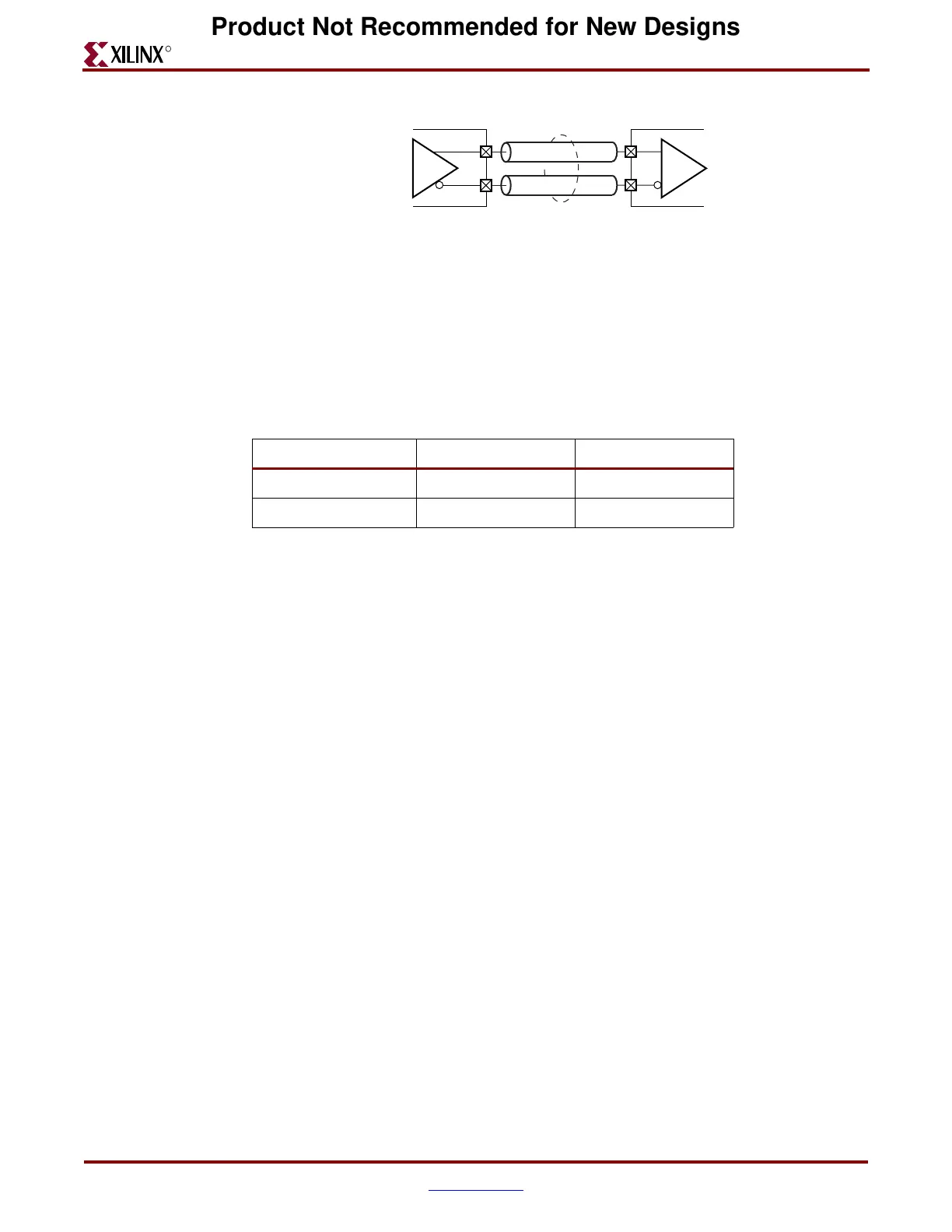118 www.xilinx.com RocketIO™ Transceiver User Guide
UG024 (v3.0) February 22, 2007
Chapter 3: Analog Design Considerations
R
The RocketIO differential receiver produces the best bit-error rates when its common-
mode voltage falls between 1.6V and 1.8V. When the receiver is AC-coupled to the line,
V
TRX
is the sole determinant of the receiver common-mode voltage, and therefore must be
set to a value within this range. When two transceivers, both terminated with 2.5V, are DC-
coupled, the common-mode voltage will establish itself at around 1.7V to 1.8V.
The V
TRX
and V
TTX
voltages for different coupling environments are summarized in
Table 3-8.
Figure 3-16: DC-Coupled Serial Link
Table 3-8: Recommended V
TRX
and V
TTX
for AC- and DC-Coupled Environments
Coupling V
TRX
V
TTX
AC 1.6V to 1.8V 2.5V ±5%
DC 2.5V ±5%
(1)
2.5V ±5%
(1)
Notes:
1. The recommended voltage for DC-coupled implementations is 2.5V. However,
any voltage is valid as long as both V
TRX
and V
TTX
are the same voltage, and
within the specifications shown in Table 3-5, page 109.
UG024_24_042503
TX
RX
Z
0
= 100Ω Differential
Product Not Recommended for New Designs

